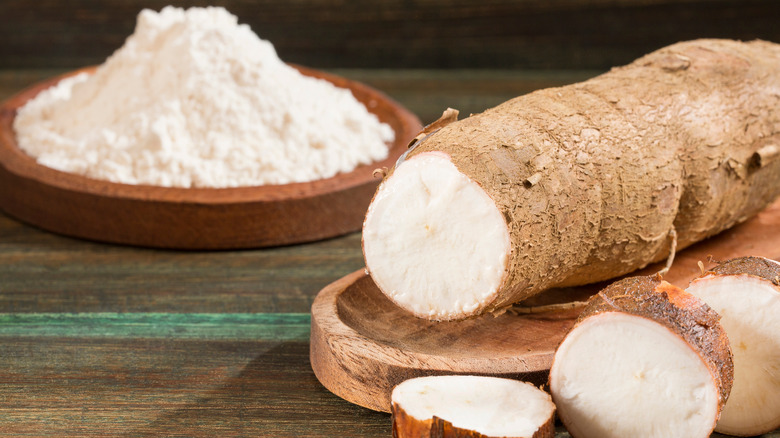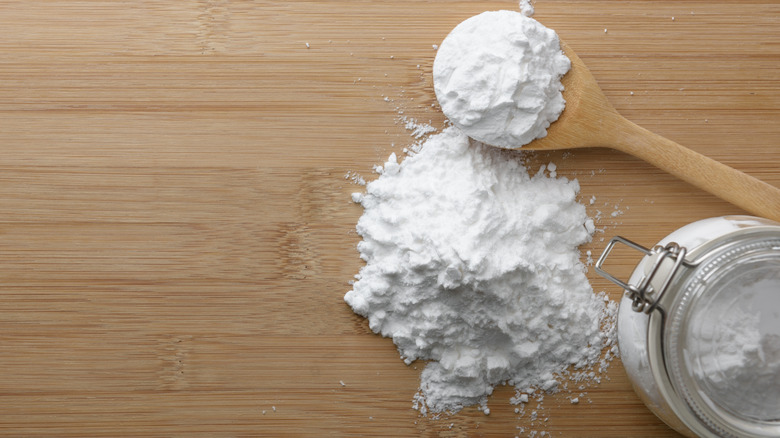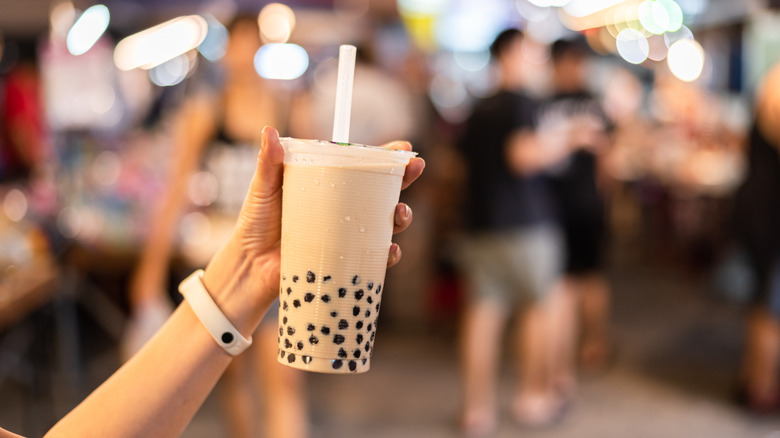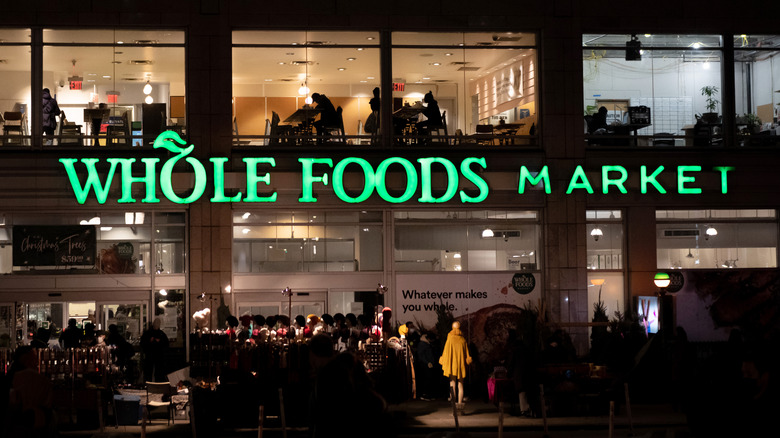What Is Tapioca And What Does It Taste Like?
We may receive a commission on purchases made from links.
You have surely heard of tapioca before and know that it can be found in all sorts of foods. In fact, it's such a common ingredient that you likely haven't given much (or any) thought to just what the stuff actually is and have simply taken it for granted. We'll wager your interest is piqued now, though, so let's not keep you waiting: According to Nourish by WebMD, tapioca is the starch produced from the root of the cassava plant, a tuber (think potatoes or yams as more commonly known tuber examples) native to South America and now common in many parts of the world.
You can think of it like this: Tapioca is to the cassava root as processed flour is to wheat. And, in fact, tapioca performs much like flour, albeit with the benefit of being gluten-free, thus it's ever more commonly used these days, as more and more people seek to eliminate or at least reduce the gluten in their diets (via WebMD). So, in short, tapioca is a flour substitute.
Now, what does tapioca taste like? Not much, according to The Spruce Eats. On its own, tapioca has almost no flavor beyond a mildly starchy profile. But that's a good thing, not a drawback — it allows tapioca to be a proverbial blank canvas, ready to soak in other flavors, whether sweet, savory, spicy, and so on. We'll talk about that more when we get to some of the common uses of tapioca in a bit.
The nutritional properties of tapioca
Tapioca has surprisingly little nutritional value. That is not to say that it's unhealthy, rather it is a very neutral foodstuff. According to Healthline, tapioca (which is distinct from cassava flour, as it is made by drying and processing fluid pressed from the root, not from the ground tuber itself) has almost no protein, hardly any fat, and is also quite low in fiber. It is essentially all carbohydrate, and it delivers less than one percent of a person's daily recommended intake for any essential vitamin or mineral.
Frankly speaking, tapioca is devoid of nutritional value. But being as it is gluten-free and grain-free, it is a viable replacement for many foods that many people cannot safely or properly digest, thus it is a healthy alternative for many people, and puts foods ranging from pizza to pudding back on the menu for those with varied food allergies or autoimmune issues (via MedlinePlus).
How is tapioca used?
As noted, tapioca is a common replacement for flour and can be used in myriad foodstuffs. It can be used to make gluten-free breads, pizza crusts, pastries, and more. Tapioca is also commonly used as a thickening agent, often seen in soups and sauces (via Bob's Red Mill). Another very common use for tapioca is in pudding, wherein it can be the primary ingredient used to give the sweet, gooey treat its texture and serve to bond all other ingredients in the dessert together.
Tapioca is perhaps the most visible (albeit often without recognition) in Bubble Tea. Also called Boba Tea and Pearl Milk Tea, according to Eater, Bubble Tea, which originated in Taiwan but is now a global sensation, is (most often — variations do exist) a sweet tea featuring milk and dozens of little tapioca "pearls." These pearls are simply little spheres made of tapioca that are boiled in a sugary syrup until they become quite sweet and also become sturdy enough to retain their shape even when suspended in liquid.
Bubble Tea gets its name from the bubble-like appearance of those little balls that are, in fact, tapioca.
Potential negative health effects of tapioca
While nutritionally rather lacking, in almost all cases tapioca is perfectly safe to eat. While it might not add much good to your diet, it will rarely compromise your health. That said, you should only ever cook with or consume tapioca products from a trusted brand, as, according to Healthline, improperly processed tapioca can be poisonous. That's because the cassava root itself contains a compound called "linamarin" that is toxic. It is removed during proper processing of the root, but if ingested into the human body, linamarin can become converted into highly dangerous hydrogen cyanide. Again, this is rarely a risk with properly processed tapioca products.
The only other notable health concerns regarding tapioca are less severe. Diabetics may need to avoid the foodstuff due to its high carbohydrate concentration, while people with a severe latex allergy should also eschew it because of a "cross-reactivity," wherein the body mistakes similar compounds found in the cassava derivative that leads to an allergic reaction (via Healthline).
Where to buy tapioca
These days, you can buy tapioca in just about any grocery store in America (and many around the world, of course), and you can order it from myriad online retailers as well. And you are hardly limited to buying tapioca (or cassava flour, as an alternative that's still gluten-free, grain-free, and nut-free (via Amazon), but much higher in fiber) in its simple powdered (or flour) form.
You can readily purchase tapioca that has already been made into pearls, such as you might use in a Bubble Tea (via Amazon), you can buy tapioca pudding (via Amazon), and, of course, you can order ready-made products like tapioca-based breads (via Amazon), tapioca pizza bites (via Amazon), and the list goes on.
Just remember that when you swap out traditional grain-based products in favor of tapioca-based products, you are sacrificing myriad nutrients that may well need to be compensated for elsewhere in your diet, be it with other foods or with vitamins and supplements.




